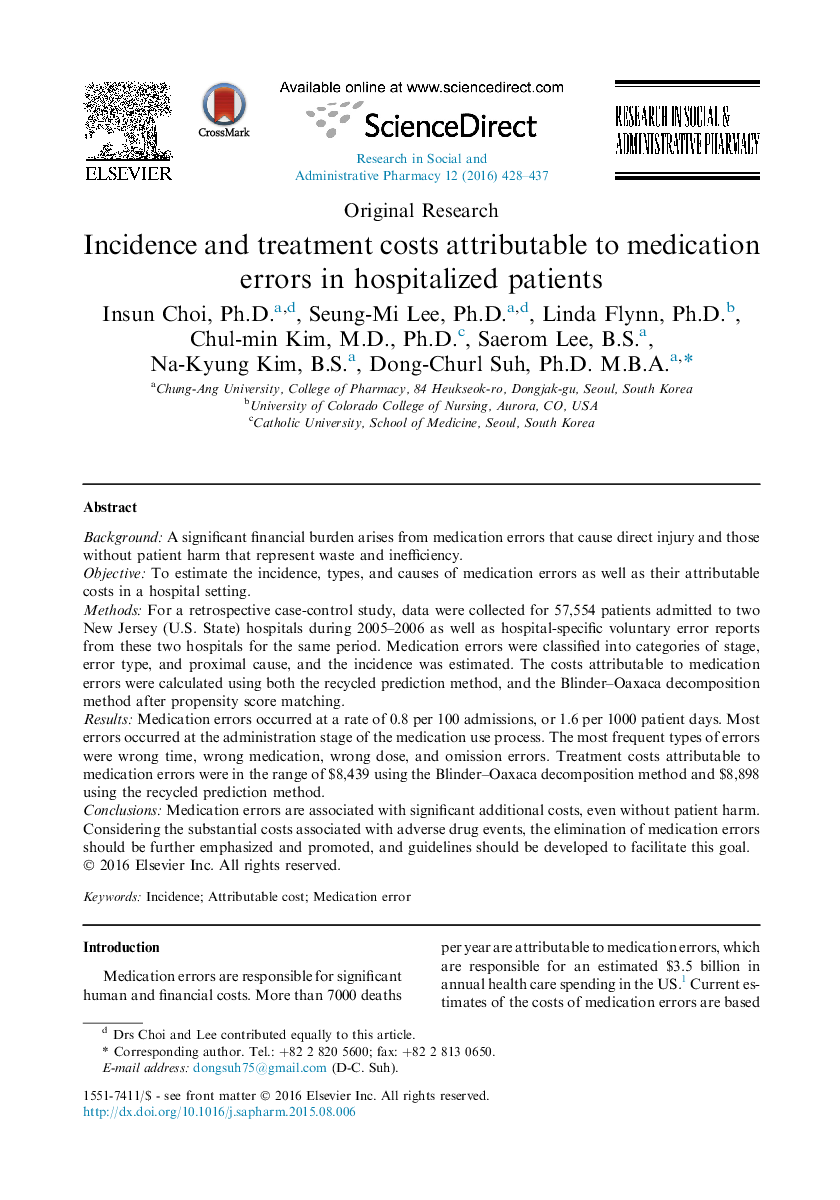| Article ID | Journal | Published Year | Pages | File Type |
|---|---|---|---|---|
| 2508187 | Research in Social and Administrative Pharmacy | 2016 | 10 Pages |
BackgroundA significant financial burden arises from medication errors that cause direct injury and those without patient harm that represent waste and inefficiency.ObjectiveTo estimate the incidence, types, and causes of medication errors as well as their attributable costs in a hospital setting.MethodsFor a retrospective case-control study, data were collected for 57,554 patients admitted to two New Jersey (U.S. State) hospitals during 2005–2006 as well as hospital-specific voluntary error reports from these two hospitals for the same period. Medication errors were classified into categories of stage, error type, and proximal cause, and the incidence was estimated. The costs attributable to medication errors were calculated using both the recycled prediction method, and the Blinder–Oaxaca decomposition method after propensity score matching.ResultsMedication errors occurred at a rate of 0.8 per 100 admissions, or 1.6 per 1000 patient days. Most errors occurred at the administration stage of the medication use process. The most frequent types of errors were wrong time, wrong medication, wrong dose, and omission errors. Treatment costs attributable to medication errors were in the range of $8,439 using the Blinder–Oaxaca decomposition method and $8,898 using the recycled prediction method.ConclusionsMedication errors are associated with significant additional costs, even without patient harm. Considering the substantial costs associated with adverse drug events, the elimination of medication errors should be further emphasized and promoted, and guidelines should be developed to facilitate this goal.
